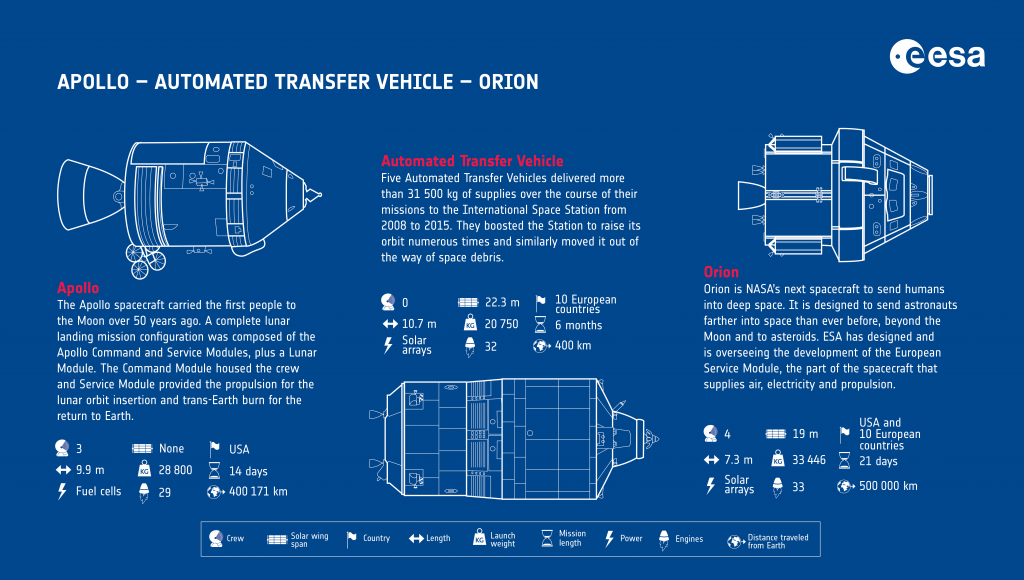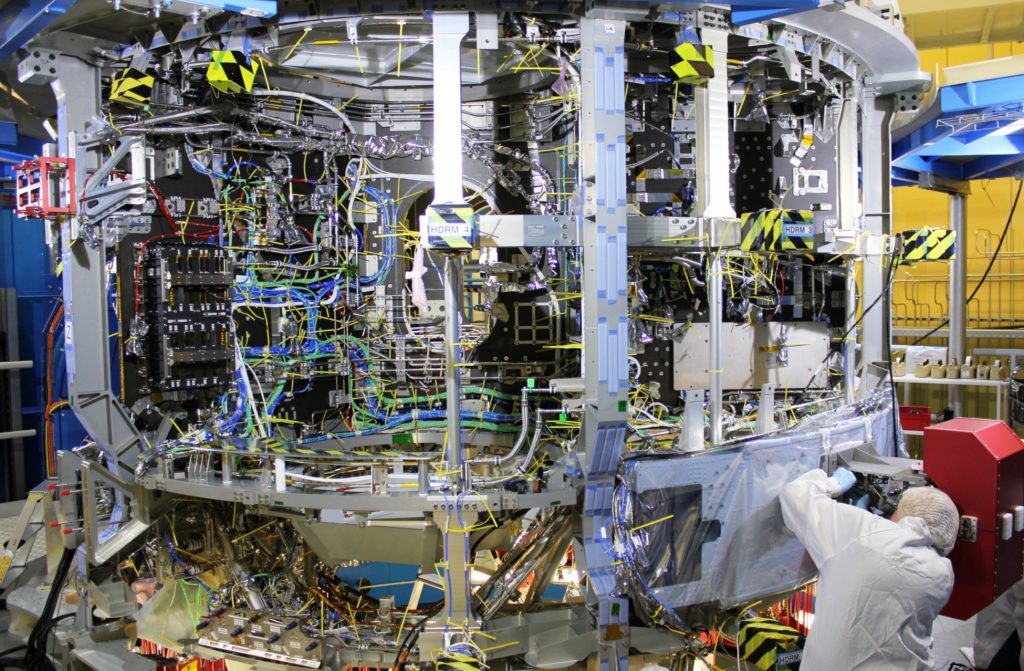Flight Controllers in the White Flight Control Room at NASA’s Johnson Space Center in Houston, USA, performed a burn using the European Service module to insert Orion into a distant retrograde orbit by firing the orbital manoeuvring system engine for 88 seconds 22:52 CET (21:52 GMT) on flight day ten, 25 November 2022. The thrusters pushed Orion at 110.6 m/s.
At the time Orion was traveling more than 91 732 km above the Moon, the most distant point from the lunar surface it will fly during Artemis I. While in orbit, flight controllers will monitor systems while in the environment of deep space.
The distant orbit will see Orion fly generally 64 400 km above the Moon. Due to this distance, it will take Orion almost a week to complete half an orbit around the Moon, where it will exit the orbit for the return journey home on a distant retrograde orbit departure procedure. About four days after this the departure burn, the spacecraft will harness the Moon’s gravitational force once again, combined with a precisely timed lunar flyby burn to slingshot Orion onto its return course to Earth ahead of splashdown in the Pacific Ocean on 11 December.

On November 26 Orion will break the record for farthest distance travelled by a spacecraft designed to carry humans to space and safely return them to Earth. This distance is currently held by the Apollo 13 spacecraft at 400 171 km from Earth. Orion was specifically designed for missions to carry humans farther into space than ever before.

On Artemis I, engineers are testing several aspects of the Orion spacecraft needed for deep space missions with crew, including its highly-capable propulsion system to maintain its course with precision and ensure its crew can get home, communication and navigation systems to maintain contact with the ground and orient the spacecraft, systems and features to handle radiation events, as well as a heat shield that can handle a high-speed reentry from the Moon. Both the distance and duration of the Artemis missions demand that spacecraft must have systems that can reliably operate far from home, be capable of keeping astronauts alive in case of emergencies and still be light enough that a rocket can launch it.
With the great performance of the spacecraft so far, several additional in flight test objectives are being considered. ESA spacecraft is coordinating proposals for additional Flight Test Objectives that could be executed during the next phases of the mission, either in distant retrograde orbit or after the return flyby of the Moon. The main goal will be to better prepare for Artemis II and later missions. on flight day ten the engineers at the Mission Evaluation Room next to mission control were offered a celebratory meal for thanksgiving.
Artemis II will test the systems required for astronauts to live and breathe in deep space. Long-duration missions far from Earth drive engineers to design compact systems not only to maximise available space for crew comfort, but also to accommodate the volume needed to carry consumables like enough food and water for the entirety of a mission lasting days or weeks.


 Automated Transfer Vehicle page
Automated Transfer Vehicle page ATV blog archive
ATV blog archive
Discussion: 2 comments
Has it been possible to foreseen if a problematic solar eruption could happen during the Artemis 1 mission? With solar orbiter or an other “device”?
The European Service Module uses radiation-resistant components as well as having backups for critical hardware, possible solar eruptions are a factor that is taken into account. If ever a component fails due to a solar eruption (or any other reason) the European Service Module will seamlessly continue operating using other hardware. The Crew Capsule offers protection from radiation, and the Campos, Helga and Zohar mannequins as well as ESA’s active dosimeters are researching radiation exposure and testing extra protection for humans.